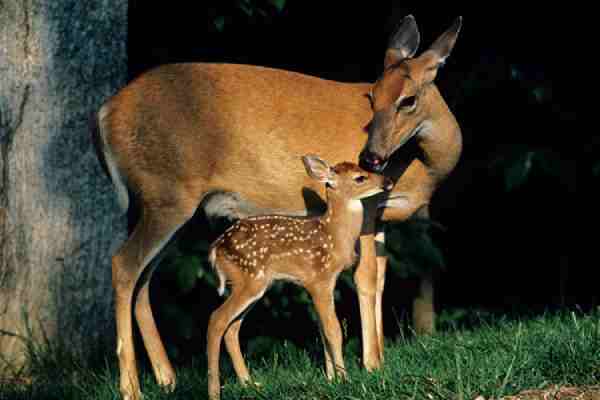Would you believe it if I told you many different animals are partial to snacking on nuts? Nuts are a classic snack option – and not just for humans! It’s no wonder too, as there’s such a wide variety of delicious nuts out there.
Table of Contents
Different animals have adapted to different regional climates and food sources, and many have developed nut-loving preferences. There’s even research being done into the psychological benefits these snacks bring for certain species!
The list goes on but suffices to say, animal appreciation for the nutritional value of nuts is an undeniable fact!
Without any more delay, let’s introduce you to some creatures that have a strong fondness for consuming nuts.
- Jays
- Squirrels
- Woodpeckers
- Foxes
- Deer
- Chickadees
- Raccoons
- Nuthatches
- Chipmunks
- Skunks
List of Animals That Eat Nuts
Jays

Scientific Name: Cyanocitta cristata
Type of Animal: Bird
Diet: Omnivore
The jay is an incredible bird, mainly known for its beautiful and colourful plumage. While the majority of their diet consists of insects and other small critters, jays are great fans of nuts! These little birds happily consume all kinds of nuts, from walnuts to almonds and chestnuts. As such, this makes them an excellent choice for backyard birders who want to share something special with these lovely creatures. Even though you can offer them peanuts, it’s best to pick healthier options like almonds or pecans.
Squirrels

Scientific Name: Sciuridae
Type of Animal: Mammal
Diet: Omnivore
Contrary to popular opinion, squirrels are not limited to just eating seeds and nuts; in fact, they are omnivores and have been known to snack on small animals, insects, and even baby snakes! However, if given their preference of food, these fuzzy little creatures would doubtless choose nuts every time.
Acorns are a staple of the typical squirrel’s diet, with the abundance of this nut found across nature providing them with easy access to a preferred source of nutrition. Nuts such as almonds, walnuts, macadamia nuts, pecans, and hazelnuts can also be common finds at the bottom of scatter hoards that keep squirrels fed throughout long winters.
Additionally, they enjoy peanuts – while not technically a nut – as part of their snack lineup because it is one legume that is readily available in the wild.
Woodpeckers

Scientific Name: Picidae
Type of Animal: Bird
Diet: Omnivore
Woodpeckers are some of the most intelligent birds. This is apparent as they quickly adapt to the change of season and make sure that their diet reflects their needs at any given moment in time.
Depending on the species, woodpeckers usually feed on insects, ants, spiders and grubs to get the protein they need. As winter approaches and preparing for colder temperatures, these scavenging birds may also consume an increased quantity of nuts, seeds and fruits so they get enough energy!
Foxes

Scientific Name: Vulpes
Type of Animal: Mammal
Diet: Omnivore
Foxes are highly opportunistic and tend to feed on whatever prey they can easily find in their habitat. Their primary diet consists of smaller animals such as rodents, birds, and rabbits; however, due to their omnivorous tendencies, they can also supplement their diet with a variety of grains and nuts.
If you happen to be lucky enough to meet up with a fox, you could even leave out some snacks for it. Foxes absolutely love snacking on a variety of nuts like acorns, almonds, peanuts, hazelnuts and many more; the only important aspect that must be kept in mind is that you should remove the shells before offering them any nutty treats since foxes are incapable of doing so and may end up chipping away at their teeth if not careful.
Deer
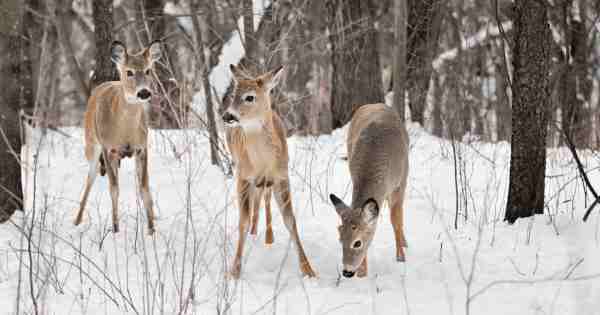
Scientific Name: Cervidae
Type of Animal: Mammal
Diet: Herbivore
In addition to their love for grass and various plants, deer are also known to enjoy eating certain types of nuts such as beechnuts, hickory nuts, acorns, and pecans. During the winter months when there is a shortage of vegetation, deer rely on nuts as a significant part of their diets.
Humans have long been fascinated by the majestic beauty of deer but perhaps the most fascinating thing about them is how resourceful they are in their ability to adapt their diets according to what food sources are available in any given season.
Chickadees

Scientific Name: Paridae
Type of Animal: Bird
Diet: Omnivore
The chickadee is easily identified by its distinctive black and white feathering. It is a sight to behold and you may sometimes see them gathering in large groups or chasing each other in play! Chickadees love nuts, especially sunflower seeds and walnuts, as these provide an excellent source of protein and fat for their diet.
If you have the pleasure of having a few chickadees visit your garden or street corner, why not place a tray of crushed walnuts and sunflower seeds nearby? This will help to make them feel welcome and before long, you could be privileged enough to watch the friendly birds fluttering about in delight.
Raccoons
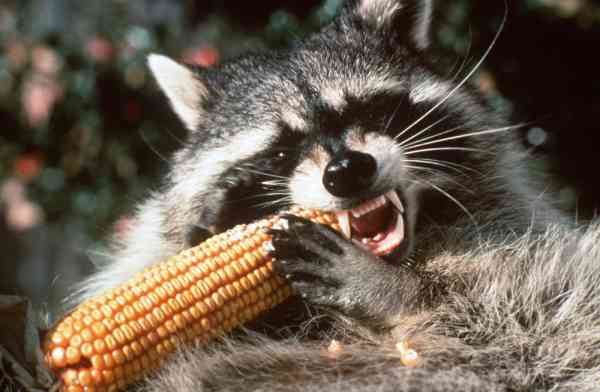
Scientific Name: Procyon lotor
Type of Animal: Mammal
Diet: Omnivore
As the year comes to an end and winter approaches, raccoons start looking for essential elements in their diet to prepare for the colder season. Nuts have proven to be a great addition to their diet, with acorns, walnuts, and beechnuts being some of their favourites.
Gathering food is crucial for their survival technique, which is why they take precautions and make sure all of their meals are rich in nutrients before it starts getting much colder. In addition to nuts and grains, one surprising item you may find in their diet is corn; raccoons only eat this when they come across it unexpectedly during their tours around town.
Nuthatches

Scientific Name: Sitta
Type of Animal: Bird
Diet: Omnivore
While it’s true that nuthatches are primarily insectivorous, they are also no strangers when it comes to nuts. Peanut butter proves to be an all-time favourite for these birds and people often take the extra step of spreading some peanut butter on tree bark as a way to feed them.
For those who want to provide a little extra help during the winter, tube feeders filled with peanuts or other nutty treats can prove to be a lifesaver.
Nuthatches have been known to quickly flock towards easily accessible nuts and seeds, so providing them with an easy food source is sure to make their lives easier during the colder months, ensuring that these lovely little birds will remain in your garden all year round!
Chipmunks
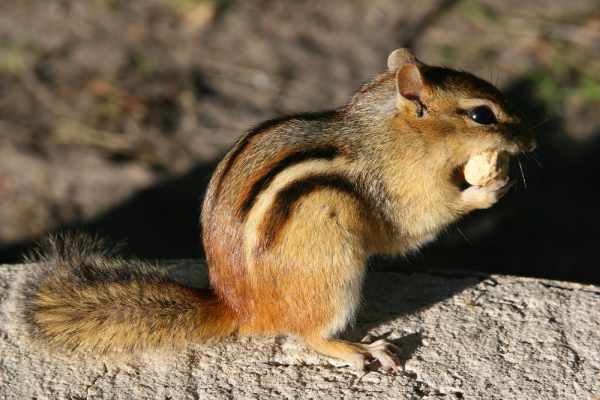
Scientific Name: Tamias Illiger
Type of Animal: Mammal
Diet: Omnivore
Did you know the chipmunk is a close relative of the squirrel and both animals enjoy a nearly identical diet? Chipmunks use their extra-fast food-gathering skills to get ready for winter, often collecting enough to last several months in just two days!
Nuts are their favourite food, including acorns, peanuts, and pine nuts. When these tiny critters have gathered enough, they use their special cheek pockets to carry them safely back to their underground burrows.
Skunks
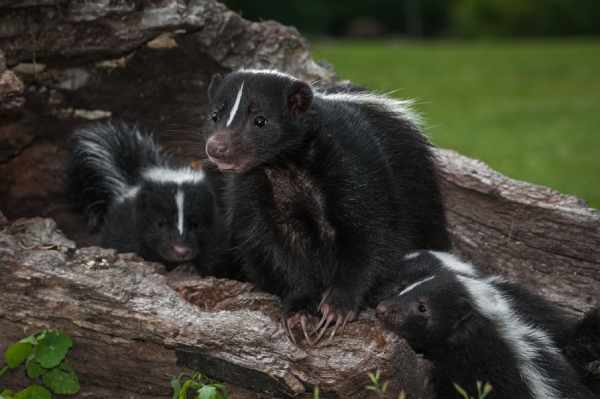
Scientific Name: Mephitidae
Type of Animal: Mammal
Diet: Omnivore
As the seasons change, so does the diet of skunks. In spring and summer when temperatures rise, skunks tend to look for fatty foods like fish to provide them with much-needed energy.
This all changes during winter when they enter a state of torpor; during this time, skunks slow down and live off their stored fat reserves.
During this period, they also turn to nuts such as hickory nuts, pecans, and walnuts to supplement the amount required calories needed to remain in torpor or hibernation during colder months.
FAQs
What animals eat almonds in the wild?
Many species, from small chickadees to larger jays and woodpeckers, will eagerly visit gardens that offer almonds or almond seeds for food. Even nuthatches, often found clinging to tree trunks and feasting on tree-dwelling insects, can be attracted to almond-filled birdfeeders.
Do snakes eat nuts?
Yes
Which bird loves to eat nuts?
Grackles. Jays. Mockingbirds. Nuthatches.
What are 5 animals that eat nuts?
During autumn, a diverse range of animals indulges in nuts as part of their diet. While squirrels are the most noticeable of these nut enthusiasts, other rodents like chipmunks and several types of native woodland mice also depend on nuts for sustenance. Additionally, larger animals such as deer and black bears heavily rely on nuts during this season.
Can Lions eat nuts?
No
Final Words
While this is the end of our discussion on animals that munch on nuts, it doesn’t have to be the end of your journey to discovering these creatures!
If you stock up on some peanuts and walnuts, you may easily get one of these critters to frequent your backyard.
Deer, squirrels, raccoons, chickadees, foxes, jays, woodpeckers and nuthatches are just some of the many animals that love savouring a nutty snack and wouldn’t miss a chance to see who or what came bearing gifts.
Reference:
- https://fortheland.org/nuts-for-wildlife/
- https://www.snackfirst.com/blogs/articles/which-animals-eat-nuts
- https://resources.bestfriends.org/article/rabbit-diet-what-feed-bunny

Zahra Makda
Growing up enjoying the beauty of my village, a good passion for nature developed in me from childhood. Following my passion for the natural world, I have chosen zoology for my graduation, during my undergraduate degree, I participated in many nature trails, bird watching, rescues, training for wildlife conservation, workshop, and seminars on biodiversity. I have a keen interest in invertebrate biology, herpetology, and ornithology. Primary interests include studies on taxonomy, ecology, habitat and behavior.

